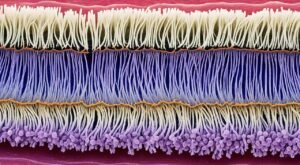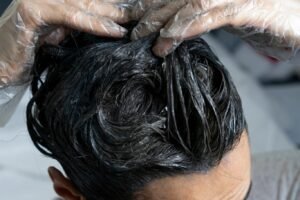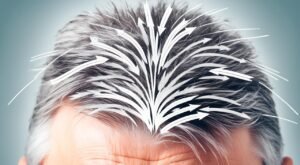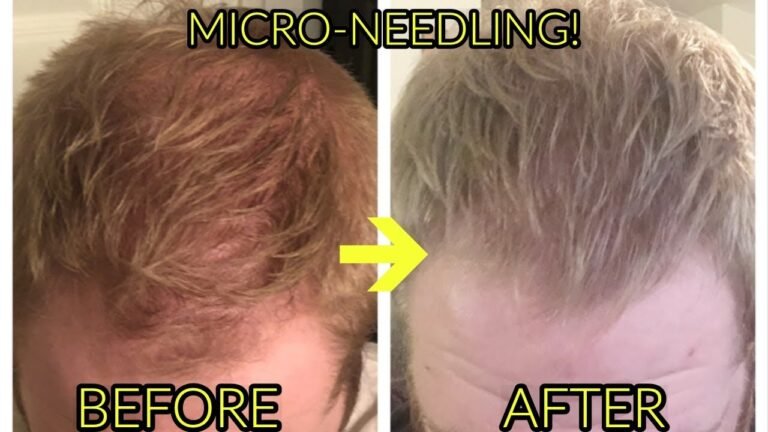Amid the myriad solutions for hair loss, a surprising contender has risen in popularity. Recent statistics indicate that a substantial number of individuals are turning to microneedling as a promising treatment for hair loss, with reports showing that nearly 80% of participants undergoing microneedling experienced an increase in hair count.
This non-surgical intervention is not just creating a buzz for its skin rejuvenation capabilities but is now being lauded for its impact on enhancing hair density and triggering regrowth.
By delving into the visual evidence of microneedling before and after hair transformations, you’ll discover the burgeoning realm of microneedling for hair regrowth before and after scenarios that showcase the potential of this innovative treatment.

Key Takeaways
- The growing trend of using microneedling as a non-invasive treatment for hair loss.
- Understanding the effectiveness of microneedling before and after hair cases through real-world examples.
- An insight into the journey of hair growth microneedling and its rising success stories.
- How microneedling for hair regrowth before and after visual documentation provides a compelling narrative of transformation.
- Why an increasing number of people regard microneedling as an essential part of their hair rejuvenation regimen.
- The importance of setting realistic expectations for hair regrowth when considering microneedling treatments.
- The emotional and psychological impact of positive results achieved through microneedling on individuals dealing with hair loss.
Understanding the Basics of Microneedling for Hair Growth
Embarking on a journey towards luscious locks involves exploring various treatments, and one that’s garnered attention is microneedling for hair growth at home. By understanding the fundamentals, you can discern whether this method aligns with your hair restoration goals. Let’s delve into the specifics of microneedling and how it compares to traditional hair growth strategies.
What is Microneedling?
Microneedling is a minimally invasive procedure that uses fine needles to create tiny punctures in the skin. Originally used for facial rejuvenation, it’s now gaining traction as a stimulant for hair growth. A device commonly used for this purpose is the dermaroller, which, when rolled over the scalp, initiates the body’s natural healing process.
The Science Behind Microneedling and Hair Regeneration
The principle behind scalp microneedling before and after transformations lies within the body’s ability to heal. These micro-injuries trigger a cascade of growth factor release and increase blood circulation to the scalp, providing essential nutrients to hair follicles. This response not only helps in strengthening hair but also potentially reverses the miniaturization of follicles, a common factor in hair loss disorders.
Comparing Microneedling to Other Hair Growth Treatments
While there are numerous hair growth treatments available, microneedling stands out due to its simplicity and ability to be performed at home. See how it weighs up against other modalities:
| Treatment | Mechanism | Usage | Cost | Effectiveness |
|---|---|---|---|---|
| Microneedling | Induces collagen and hair growth factors | Home-based, with precise instructions | Cost-effective with reusable tools | Highly effective when done consistently |
| Topical Solutions | Chemical action on hair follicles | Daily application | Recurring monthly expenses | Varies, dependent on user’s response |
| Hair Transplant Surgery | Surgical redistribution of hair | Single or multiple clinical sessions | Significant, with possible follow-up costs | Permanent, but requires healing time |
Microneedling for hair growth at home presents an accessible and cost-effective option. While results vary, the gradual improvements have made it a popular choice for those seeking a practical solution to hair loss.
The Beauty of Transformations: Microneedling Before and After Hair
The journey of reversing hair loss and stimulating regrowth often requires patience, persistence, and the right treatment approach. Microneedling for hair loss before and after images capture not just the visual evidence of this innovative treatment’s effectiveness but also the profound impact on self-esteem and confidence. While individual results vary due to factors like age, genetics, and overall health, many have seen significant improvements in hair density and quality.

In assessing the value of microneedling for hair restoration, it is crucial to maintain realistic expectations. Not everyone will experience the same level of regrowth, and some patients may require concurrent treatments like topical growth serums or medications. Additionally, the microneedling process must be performed consistently over time. It is generally advised to undergo the procedure every 4-6 weeks to achieve optimal results.
Let’s take a closer look at what those who have benefited from microneedling have to say about their experience:
After six months of regular treatments, my once sparse hairline is now visibly fuller and healthier. Seeing the before and after pictures side by side was an emotional moment for me. – Anonymous User
The transformation isn’t just aesthetic. It’s about restoring a part of your identity that may feel lost amid thinning or balding hair. Below is a comparative table that broadly outlines what potential progress can look like at varying stages in the treatment:
| Time Frame | Expected Progress |
|---|---|
| 1-3 Months | Decreased hair shedding, early signs of regrowth |
| 3-6 Months | Noticeable improvements in hair thickness and coverage |
| 6-12 Months | Significant hair regrowth, with fuller appearance |
It’s essential to document your own journey carefully with microneedling for hair loss before and after photographs. These will not only help you track progress but can also provide valuable information for your dermatologist or trichologist to tailor your ongoing treatment.
Microneedling’s appeal lies in its potential to rejuvenate and reactivate dormant follicles, fostering an environment conducive to new growth. For those wading through the vast sea of hair loss solutions, microneedling has emerged as a beacon of hope, backed by both anecdotal success stories and a growing body of scientific research.
Real Stories: Microneedling for Hair Loss Before and After
As you consider microneedling to address concerns of thinning hair, it’s both enlightening and encouraging to hear from those who have walked the path before you. Through microneedling for thinning hair results and microneedling for hair growth reviews, real-world stories provide powerful insight into the journey of hair regrowth. The following narratives illustrate the highs and lows, the patience required, and the genuine elation experienced by individuals who’ve seen transformative outcomes.
Documenting Hair Regrowth Journeys
Hair regrowth is a deeply personal experience, enriched by the unique stories of individuals who have utilized microneedling treatments. From executives to stay-at-home parents, the quest for rejuvenated hair cuts across demographics. These real-life accounts reveal not just the effectiveness of the procedure, but also the emotional upliftment and regained confidence that accompany visible improvements to one’s hairline.
- Case studies frequently highlight a reduction in hair loss just weeks after commencing regular treatments.
- Many note a surprising increase in the density and thickness of their hair over consecutive months.
- The psychological impact, as reported by several individuals, suggests an enhanced quality of life and self-image.
Success Rates and Timeframes for Visible Results
Understanding the success rates and expected timeframes can help temper your expectations with reality. Microneedling, like any hair growth method, demands both consistency and patience. While some individuals report early signs of success, for others, the journey may extend over a more prolonged period. Below is a table based on compiled reviews that provides a depiction of what you might anticipate:
| Timeframe | Percentage of Individuals Noticing Improvement | Reported Changes |
|---|---|---|
| 1-3 months | 35% | Slower hair loss, initial signs of regrowth |
| 3-6 months | 60% | Noticeable hair growth, increased thickness |
| 6-12 months | 85% | Significant hair regrowth, fuller appearance |
| 12+ months | 92% | Sustained hair regrowth, dense and healthy hair |
This data underscores an essential truth about hair regrowth through microneedling; it is a journey often marked by gradual progress rather than overnight success. As you read through the microneedling for hair growth reviews, remind yourself that each story is a chapter in a longer narrative, one that could ultimately lead to your own success story in the fight against hair loss.

Enjoy
20% Off
Microneedling for Thinning Hair Results
If you’re grappling with thinning hair, you might be searching for a non-surgical solution that can help restore your hair’s volume and density. One such treatment generating discussion is microneedling for hair regrowth before and after examination. Let’s delve into the efficacy of this method and what you can expect in terms of results.
As you might know, microneedling involves using fine needles to create tiny punctures in the skin, which is thought to kickstart your body’s healing process and boost collagen production. While it’s commonly used for skin rejuvenation, it’s also gaining momentum for its potential to stimulate hair regrowth.
When considering microneedling, you likely want proof of its effectiveness. Here’s where before and after comparisons come into play. Many individuals have reported significant improvements in hair density and strength, which are often evidenced through photographic documentation taken over the course of their treatment.
Statistical data also stands in support of microneedling for hair regrowth. Studies have shown that a regular microneedling regimen can lead to a noticeable increase in hair count and thickness. Of course, individual results can vary based on factors like the severity of hair thinning, age, and overall health.
- Increased hair count within 12 weeks of consistent treatment
- Enhancement in hair thickness and fortification of existing hair
- Improved scalp health and hair follicle size
It’s essential to approach microneedling with realistic expectations. Complete baldness, for example, might not see the same level of regrowth compared to areas where hair is thinning. The process can be gradual, so patience and adherence to recommended treatment frequency are key.
Moreover, microneedling for hair regrowth before and after experiences suggest that supplementing the procedure with topical hair growth treatments can further enhance the outcomes. A tailored regimen that includes both microneedling and supportive hair care products often yields the best results.
Ultimately, while individual experiences with microneedling can vary, a significant number of cases demonstrate its value as a viable option for managing and improving thinning hair. If you’re considering this treatment, it may be worthwhile to consult with a professional to evaluate your specific situation and discuss potential outcomes.
Choosing the Right Microneedling Tools and Techniques
Embarking on the journey of microneedling for hair growth at home, it’s crucial to select the right tools that align with your goals and comfort level. Considering the type of device and whether to self-administer or seek professional help can make a significant impact on your experience and results. In this section, we’ll dive into the differences between popular tools and the decision-making process of at-home versus professional treatments.
Dermarollers vs. Dermastamps
When it comes to at-home microneedling, dermarollers and dermastamps are the most widely used instruments. Both devices have a similar purpose—to create microchannels in the scalp that stimulate hair follicles and help increase blood circulation. However, dermarollers, which are cylindrical in shape and rolled over the scalp, tend to cover larger areas more quickly. In contrast, dermastamps offer a more targeted approach by pressing down on specific spots, which can be beneficial for addressing problem areas with precision.
Professional Treatments Versus at-Home Solutions
When deciding between professional treatments and microneedling for hair growth at home, several factors must be taken into account. Professional treatments are conducted by trained specialists using advanced tools, ensuring a higher level of precision and typically incorporating other complementary therapies. However, these sessions come at a premium cost and require scheduling appointments.
On the flip side, at-home solutions provide the flexibility and convenience of self-administering the procedure. It’s a more cost-effective approach but requires you to learn the proper techniques to avoid injuries and infections. Below is a comparison to help you weigh the pros and cons:
| Aspect | Professional Treatments | At-Home Solutions |
|---|---|---|
| Cost | Higher upfront costs per session. | More affordable with the purchase of reusable tools. |
| Convenience | Need to schedule appointments; may require travel. | Can be performed at any suitable time; no travel necessary. |
| Expertise | Performed by professionals with specialized training. | Requires self-education and practice to master techniques. |
| Safety | Higher safety standards with sterilized environments. | Hygiene and technique are the user’s responsibility. |
| Customization | Treatments are tailored specifically to your scalp and hair needs. | Limited personalization unless guided by professional advice. |
Ultimately, your decision should be based on your personal preferences, comfort with self-treatment, and budget constraints. If you choose to pursue microneedling for hair growth at home, equip yourself with knowledge and practice good hygiene to help achieve optimal outcomes.
Scalp Microneedling Before and After: Case Studies and Photographic Proof
When considering microneedling for hair loss, before and after photos provide compelling evidence of success. To illustrate the genuine impact of this procedure, we’ve compiled various case studies focusing on scalp microneedling before and after transformations. These visual narratives showcase the condition of individuals’ scalps prior to treatment and the remarkable improvements post-treatment. You’ll find these case studies not only encouraging but also a testament to the efficacy of microneedling as a reliable approach to hair restoration.
Analyzing Scalp Health Pre-and Post-Microneedling
Understanding the state of scalp health is critical before initiating any treatment. Microneedling’s ability to invigorate the scalp and promote hair growth is captured vividly in the documented progressions of our subjects. Let’s explore the before and after scenarios:
| Case Study | Scalp Condition Pre-Microneedling | Scalp Condition Post-Microneedling | Number of Treatments |
|---|---|---|---|
| Case Study 1 | Diffuse Thinning | Significant reduction in hair loss | 4 |
| Case Study 2 | Mild Alopecia Areata | Noticeable hair regrowth | 6 |
| Case Study 3 | Receding Hairline | Stabilized hairline with new growth | 5 |
The Role of Hair Care Regimen in Enhancing Microneedling Results
While microneedling works wonders on its own, pairing it with a disciplined hair care regimen can amplify its effects. Below, we have outlined essential components of a hair care routine that recipients of microneedling for hair loss before and after treatments found beneficial:
- Gentle Cleansing: Use sulfate-free shampoos to cleanse without stripping the scalp of its natural oils.
- Nourishing Oils: Natural oils like rosemary and peppermint can invigorate the scalp and support hair growth.
- Avoid Harsh Styling: Minimize heat and chemical treatments that could potentially compromise the scalp’s healing process.
- Balanced Diet: Incorporate a diet rich in vitamins and minerals that fortify hair health.
- Consistency: Regular application of growth serums and periodic microneedling sessions contribute to sustained improvement.
From Skepticism to Belief: Microneedling for Hair Growth Reviews
If you’ve been combing through the internet in search of microneedling for hair growth reviews, you may have noticed a trend: many users begin their journeys with a healthy dose of skepticism. It’s not uncommon; after all, microneedling is a procedure that punctures your scalp’s surface with tiny needles. However, the unique experiences of individuals who have tried this technique are turning the tide of opinion. Let’s delve into real users’ accounts that shed light on the effect of microneedling on their hair restoration endeavors.

Enjoy
20% Off
“I was doubtful at first. The idea of using needles on my scalp was intimidating. But after four months, my hairline began to fill in. It’s not a magic bullet, but it’s made a significant impact on my hair’s thickness and overall health.” – Alex, Forum Review
Statements like Alex’s are not rare in the beauty and health forums. The consensus among those who were originally doubtful is that microneedling can stimulate not only hair growth but also enhance the efficacy of topical treatments applied in unison.
The table below presents a curated summary of user experiences before and after microneedling treatments:
| User | Initial Thoughts | Post-Treatment Results | Duration |
|---|---|---|---|
| Emily R. | Skeptical of results, feared pain | Noticeable hair growth, reduced hair fall | 6 months |
| Marcus T. | Doubted efficacy, tested as a last resort | Thicker hair, more self-confidence | 5 months |
| Nina S. | Concerned about scalp damage | Healthier scalp, more voluminous hair | 4 months |
Each review echoes a journey from doubt to tangible results, contributing to a growing collective confidence in microneedling as a viable solution for enhancing hair growth. While each individual’s experience can vary based on factors such as age, hair care regimen, and overall health, the central message is clear: when microneedling is performed correctly and combined with a suitable hair care routine, it can lead to positive outcomes.
As with any cosmetic procedure, it’s essential to go through a proper vetting process. Consult with dermatologists, study microneedling for hair growth reviews, compare before and after images, and make an informed decision. Remember that while microneedling has converted skeptics into proponents, individual results can vary, and it’s important to maintain realistic expectations.
Maximizing Microneedling Benefits for Hair Regrowth
Embarking on a microneedling journey opens a world of possibilities for enhancing your hair’s health and appearance. To truly leverage the potential of microneedling before and after hair transformations, integrating targeted treatments and adopting lifestyle changes can be pivotal. These strategies can synergistically boost the effects of hair growth microneedling, driving more pronounced and satisfying results.
Integrating Microneedling with Hair Growth Serums and Topicals
Combining microneedling with hair growth serums and topicals can significantly bolster the regenerative process. These products typically contain active ingredients known to stimulate hair follicles and improve scalp health. By applying them post-microneedling, you take advantage of the increased absorption rates thanks to the micro-channels created during the treatment. This can lead to enhanced efficacy of the topicals, potentially leading to more rapid and noticeable hair regrowth.
- Hair Growth Serums: Enriched with nutrients such as biotin, caffeine, and peptides, these serums can invigorate the scalp and fortify hair strands.
- Antioxidant-rich Oils: Oils like rosemary and peppermint can boost circulation and have been linked to promoting hair thickness and growth.
- DHT Blockers: Ingredients that inhibit the hormone dihydrotestosterone (DHT) may help in reducing hair loss, a common concern for those with androgenetic alopecia.
Lifestyle Changes to Complement Your Microneedling Routine
Adopting positive lifestyle shifts can contribute to the overall success of your microneedling regimen. Key areas to focus on include diet, stress management, and sleep quality—each playing a substantial role in your body’s ability to regenerate and heal.
- Nutrition: A diet rich in proteins, vitamins, and minerals like iron, zinc, and vitamins A, C, and E is crucial for maintaining healthy hair.
- Stress Reduction: Engaging in regular stress-relieving activities such as yoga, meditation, or physical exercise can help mitigate hair loss associated with stress.
- Quality Sleep: Ensuring adequate sleep is essential as it’s a time when your body repairs itself—including your hair follicles.
While individual results may vary, the combination of using the right products and adopting a healthier lifestyle can make a significant difference in your hair growth microneedling outcomes. Remember, consistency is key to seeing the results you desire.
Microneedling for Hair Growth at Home: DIY Tips and Tricks
Embarking on the journey of microneedling for hair growth at home can be a promising path towards combating thinning hair. With the right approach, you can potentially achieve remarkable microneedling for thinning hair results, giving you the confidence to continue the treatment in the privacy of your own space. Below, find essential guidance to ensure your DIY microneedling is both safe and effective.
Step-by-Step Guide to Safe and Effective Home Microneedling
Before diving into the world of at-home microneedling, it’s crucial to grasp the step-by-step process thoroughly:
- Choose the Correct Device: Select a microneedling tool with needles appropriate for scalp use, typically ranging between 0.25mm to 0.5mm in length for home use.
- Sanitize Your Tool: Prior to every use, ensure your microneedling device is properly sterilized with isopropyl alcohol to prevent any infections.
- Prepare Your Scalp: Cleanse your scalp and hair to remove any residue or oils that may impede the efficiency of the treatment.
- Gentle Application: Apply the tool to your scalp with light to moderate pressure, rolling in horizontal, vertical, and diagonal patterns to cover all areas.
- Post-Treatment Care: After microneedling, apply a hair growth serum or topical recommended for use with microneedling to enhance results.
- Clean Your Device: Once done, wash the device with soapy water, sanitize again, and store it properly for the next use.
Following these steps diligently will help you create a foundation for achieving effective results from microneedling for hair growth at home.
Troubleshooting Common Issues and Enhancing Technique
As you proceed with your DIY microneedling sessions, you may encounter some common concerns. Here’s how to address them:
- Experiencing excessive discomfort? Make sure you’re not applying too much pressure and that the needle length is appropriate for home use.
- Not seeing results? Patiently continue the treatment as microneedling for thinning hair results can take several months to become apparent.
- Notice any irritation or infection? Pause your sessions and consult a professional to ensure your skin heals fully before continuing.
Improving your home microneedling technique can be achieved by staying informed about best practices, giving your scalp time to recover between sessions, and consistently caring for your scalp’s health with suitable hair care products.
Remember, whether you’re seeking to revitalize your hair, improve density, or simply enhance overall hair health, microneedling for hair growth at home requires patience, precision, and a commitment to the process. The journey may not be instantaneous, but with perseverance, the outcomes can be both satisfying and visually impressive.
ended fanil we say
Embarking on the road to hair rejuvenation, microneedling before and after hair results have provided many individuals with a compelling glimpse into the transformative effects of this innovative treatment. As we have explored the basics, heard real stories, and grasped the nuances of tool selection and technique, it’s evident that microneedling for hair loss stands as a beacon of hope for those seeking to overcome the challenges of hair thinning or balding. This non-invasive, evidence-based approach has carved out a niche in the hair care and rejuvenation industry, offering a sense of renewal and self-confidence to its recipients.
The journey through microneedling for hair regrowth before and after spans from a foundational understanding of its mechanisms to mastering at-home treatments. Your dedication to applying these insights can greatly impact the effectiveness of your personal hair regrowth strategy. By aligning your regimen with scientifically backed practices and maintaining a commitment to consistency and care, the pathway to achieving denser, healthier hair becomes clear.
In conclusion, your takeaways from this article should provide a comprehensive overview of the potential that microneedling holds. As you consider integrating this powerful method into your hair care routine, remember that patience and persistence are key. Whether you choose professional treatments or decide on a DIY approach, your aspirations for hair regrowth are well within reach, supported by the compelling evidence and stories of those who have witnessed the remarkable results firsthand.
FAQ
What is Microneedling and how can it help with hair growth?
Microneedling is a minimally invasive cosmetic procedure that uses fine needles to puncture the skin, creating micro wounds that stimulate healing and the production of collagen. For hair growth, microneedling on the scalp can boost blood flow and nutrient supply to follicles, potentially leading to thicker hair and stimulating dormant hair follicles to promote regrowth.
Can you provide some examples of microneedling before and after hair growth?
Yes, many individuals who have undergone microneedling for hair loss have seen noticeable improvements in hair density and texture. ‘Before and after’ photos typically show areas of thinning or balding before treatment with increased fullness and hair coverage after a series of microneedling sessions. It’s important to note that individual results can vary significantly.
Is microneedling for hair regrowth clinically proven?
While research on microneedling for hair regrowth is still emerging, several studies have demonstrated its effectiveness when combined with other treatments such as topical minoxidil. Improved hair growth is believed to result from the wound-healing process that microneedling initiates, which includes increased blood flow and growth factors to hair follicles.
How does scalp microneedling compare to other hair growth treatments?
Scalp microneedling is one hair growth method among others such as minoxidil, finasteride, and hair transplants. It’s considered less invasive than surgical options and can be used in conjunction with topical treatments to increase their efficacy. Each treatment has its own set of benefits and potential side effects that should be considered in consultation with a healthcare professional.
What are microneedling for hair growth reviews saying?
Reviews for microneedling for hair rejuvenation are generally positive with many users reporting satisfactory results. Reviewers often mention improved hair thickness and reduced hair loss. Critically, they suggest patience, as results can take several months to become evident. It’s also common to see recommendations for combining treatments such as topical growth promoters for optimal results.
Can microneedling be performed for hair growth at home?
Yes, microneedling can be performed at home using devices such as dermarollers or dermastamps, although professional guidance is recommended for best practices and safety. Home treatments require strict adherence to hygiene and proper usage techniques to minimize risks like infection or skin irritation.
What do microneedling for hair loss before and after cases suggest about effectiveness?
Before and after cases often show a marked improvement in hair density and coverage, suggesting that microneedling can be effective for various degrees of hair loss. These visual accounts, backed by personal testimonials, demonstrate that with regular treatment, individuals may experience positive outcomes—though it’s important to manage expectations as results can be highly individual.
Are there any side effects associated with microneedling for hair growth?
Similar to microneedling performed on the skin, side effects for hair growth treatments can include temporary redness, swelling, and irritation at the treatment site. Infection is a rare but possible complication if proper hygiene practices are not followed, especially with at-home treatments.
How soon can results from microneedling for thinning hair be expected?
Results from microneedling can vary, but many patients start to notice changes in their hair density and quality within 2 to 3 months of starting treatment. Optimal results often require a consistent regime over 6 months or more, with maintenance treatments thereafter.
What role does a hair care routine play in enhancing microneedling results?
A proper hair care routine can significantly enhance the results of microneedling treatments. Using gentle, nourishing products can help to soothe the scalp and optimize conditions for hair growth. Additionally, certain topical treatments like growth serums can penetrate more effectively post-microneedling, leading to better growth results.











